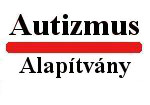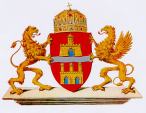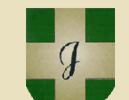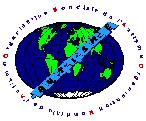

 |
 |
Számlaszámunk:
MKB 10300002-
20327589-70073285
Adószámunk:
19010148-2-42
Támogatóink:










BARON-COHEN,
S. BOLTON, P. (1993): Autism. The facts. Oxford: Oxford University
Press. [Magyarul: Autizmus. Budapest: Osiris Kiadó, 2000.]
BARON-COHEN, S., TAGER-FLUSBERG,
H. &
COHEN, D. J. (2000b): A
Note on Nosology. In: Baron-Cohen et al., 2000a.
BORDEN,
C. & OLLENDICK, T. (1994): An Examination of the
Validity of
Social Subtypes in Autism. Journal of Autism and Developmental
Disorders, 24, 1, 23-37.
BOUCHER, J. (1996): What could possibly explain autism? In:
Carruthers, P. & Smith, P. K. (eds.), 1996a, pp 223-241.
COHEN,
D. J. and DONNELLAN, A. M. (eds.), (1987): Handbook of Autism
and Pervasive Developmental Disorders. New York: Wiley
COHEN,
D. J. & VOLKMAR, F. R., (eds.), (1997) Handbook of Autism and
Pervasive Developmental Disorders. Second Edition. New York: Wiley
DAWSON,
G., OSTERLING, J., MELTZOFF, A.N., & KUHL, P. (2000): Case
study of
the development of an infant with autism from birth to two years of
age. Journal of Applied Developmental Psychology, 21, 3, 299-313
EAVES,
L., HO, H.H. & EAVES, D. (1994): Subtypes of Autism
by Cluster
Analysis. Journal of Autism and Developmental Disorders, 24, 1, 3-23
FRITH,
U. (1989): Autism: Explaining the Enigma. Oxford: Basil
Blackwell
FRITH, U. (1991a) (ed.): Autism and Asperger syndrome. Cambridge:
Cambridge University Press.
BAILEY,
A., LE COUTEUR, A., GOTTESMAN, I., BOLTON, P., SIMONOFF, E., YUZDA, E.,
& RUTTER, M. (1995): Autism as a strongly genetic disorder:
evidence from a British twin study. Psychological Medicine, 25, 63-128.
BAILEY,
A., PHILLIPS, W., & RUTTER, M. (1996): Autism: Towards an
Integration of Clinical, Neuropsychological, and Neurobiological
Perspectives. Journal of Child Psychology and Psychiatry, Vol. 37,
No.1., 89-126.
BRYSON,
S.E. (1997): Epidemiology of autism: overview and issues
outstanding. In: Cohen, D.J. & Volkmar, F.R., 1997.
GILLBERG, C. (2000): An overview of the
biology of
autism. Conference
paper. Autism-Europe Congress, Glasgow, Scotland.
GILLBERG, C. (2003): Epidemiology of autism. Conference paper. The
Social Brain Conference, Göteborg, Sweden.
GILLBERG, C., & COLEMAN, M. (1992): The biology of the autistic
syndromes. London: MacKeith Press.
GILLBERG,
C. & COLEMAN, M. (2000): The Biology of the Autistic Syndromes.
3rd edition. MacKeith Press.
LE COUTEUR, A. (2000): The genetics of
autism.
Conference
paper. Autism-Europe Conference, Glasgow, Scotland
SZATMARI,
P., & JONES, M. B. (1991): IQ and the genetics of autism.
Journal of Child Psychology and Psychiatry, 32, 897-908.
COURCHESNE,
E. (1995): New evidence for
cerebellar and
brainstem hypoplasia in autistic infants, children and adolescents: the
MR imaging study by Hashimoto and colleagues. Journal of Autism and
Developmental Disorders, 25, 19-22.
DAMASIO,
A., & MAURER, R. G. (1978): A neurological model of childhood
autism. Archives of Neurology, 35, 777-786.
DIAMOND,
A. (1991): Frontal lobe involvement in cognitive changes during the
first year of life. In Gibson, K.R. & Peterson, A.C. (eds.)
Brain
maturation and cognitive development, New York: De Gruyter.
FRITH, U. (1997): The
neurocognitive basis of
autism. Trends in
Cognitive Sciences, 1, 2, 73-77.
HASHIMOTO,
T., TAYAMA, M., MURAKAWA, K., YOSHIMOTO, T., MIYAZAKI, M., HARADA, M.
ET AL. (1995): Development of the brainstem and the cerebellum in
autistic patients. Journal of Autism and Developmental Disorders, 25,
1-18.
LESLIE,
A.M. & THAISS, L. (1992): Domain specificity in conceptual
development: Neuropsychological evidence from autism. Cognition, 43,
225-251.
PIVEN,
J., SALIBA, K., BAILEY, J., ARNDT., S. (1997): An MRI study of autism:
the cerebellum revisited. Neurology,49, 546-551
ROBBINS,
T. W. (1997): Integrating the neurobiological and neuropsychological
dimensions of autism. In: Russell, J., 1997a, pp 21-53.
ROBERTS,
R.J. & PENNINGTON, B.F. (1996): An interactive framework for
examining prefrontal cognitive processes. Development and
Psychopathology, 3, 137-63.
STONE,
V. (2000): The role of frontal lobes and the amygdala in theory of
mind. In: Baron-Cohen, S., Tager-Flusberg, H. and Cohen, D. J. (2000).
THOMAS, M.
& KARMILOFF-SMITH, A. (in press): Are developmental disorders
like
cases of adult brain damage? Implications from connectionist modelling.
Behavioral and Brain Sciences.